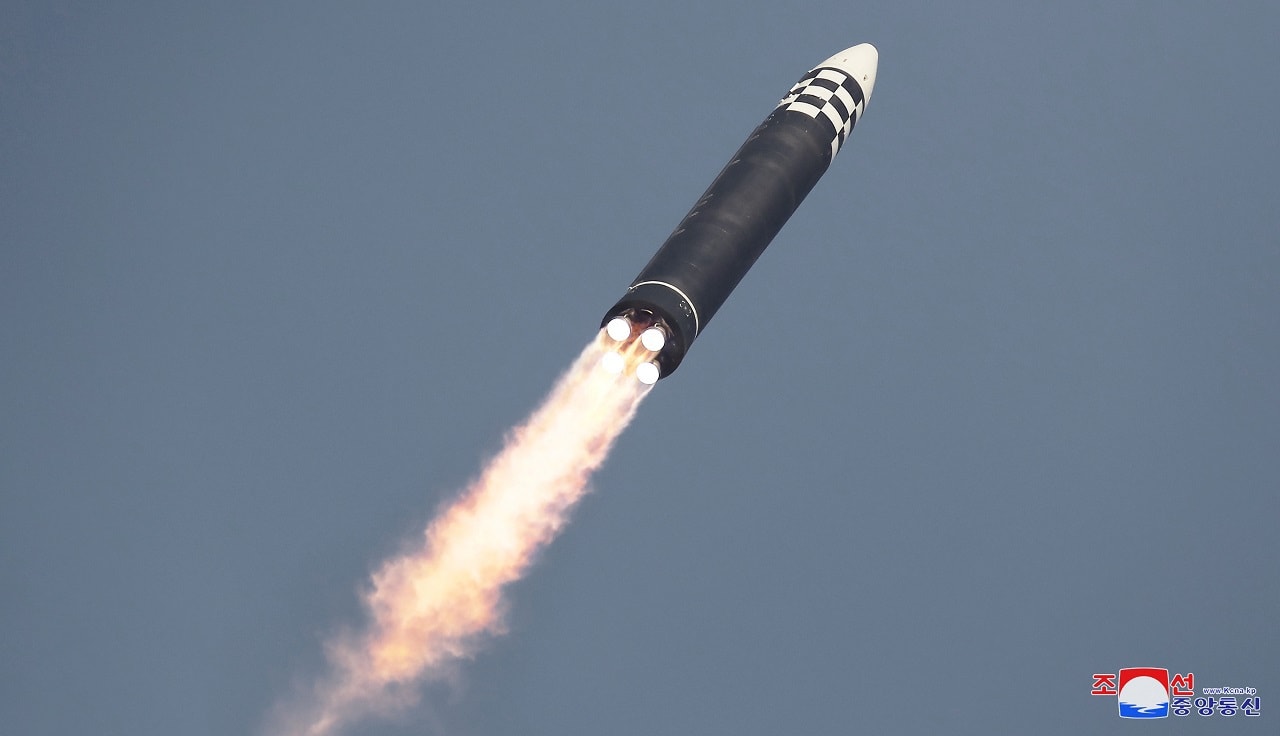North Korea’s weapons systems have developed in important ways since 2017. A spate of missile tests have involved submarine-launched ballistic missiles and short-range ballistic missiles. Of special interest to the United States and the international system, though, are tests of intercontinental ballistic missiles with ranges sufficient to reach all or most of America with a nuclear weapon.
(Subscribe to Our YouTube Channel Here. Check out More 19FortyFive Videos Here)
These tests demonstrate missiles with vastly increased accuracy, enhanced abilities to evade U.S. and allied defenses, and a diversity of systems that give North Korea important options during wartime.
Russian Help
North Korea’s testing of advanced systems in recent years means we are now looking at a new paradigm. Several of the systems the North Koreans now have and are working to incorporate into their military are either coming from the Russians or being built with the assistance of Russian companies.
A good example of this is a missile system we have seen the North Koreans test several times that looks remarkably like Russia’s Iskander system. In recent years, the United States has sanctioned Russian companies several times for assisting North Korean missile development. This is new. Even during the Cold War, North Korea had to look elsewhere for ballistic missile development. (It did sometimes get old systems from former Soviet client states.) But that has changed, and the threat North Korea is able to pose to South Korea and the United States is now exacerbated by Russian assistance.
How capable are the new ICBM systems we have seen tested? The Hwasong-14 and Hwasong-15 have actually proven to be reliable in the few tests that have been conducted. Both systems can hit the United States, with the Hwasong-15 being able to travel the farthest and carry the heaviest payload. In theory, it could reach the U.S. East Coast.
Growing Capabilities
The Hwasong-17 is the largest ballistic missile the North Koreans have ever launched, and it is significantly larger than the Hwasong-15. Its testing record, however, is mixed at best. The North Koreans also recently tested a solid-fuel engine that may be powerful enough to serve as the first stage of an ICBM (or an SLBM).
Also of significance is the recent test of what Pyongyang describes as a “space launch vehicle” to launch a spy satellite into space. They even showed pictures they claimed were of Seoul, taken by the satellite. While a simple spy satellite poses little threat to South Korea or the United States, the North Koreans are known to be developing their electromagnetic pulse technology. If used by a satellite or satellites, this could be a significant threat to the United States and key allies in the region.
All of this leads to the biggest question analysts in the United States continue to debate. Since North Korea has never conducted a “full-range” test of an ICBM (in other words, a test using a traditional test-launch trajectory to the range of a missile), how do we know that they could launch an ICBM toward a target, re-enter the earth’s atmosphere successfully, and detonate a nuclear weapon? Tests conducted since 2017 show that both the Hwasong-14 and Hwasong-15 have the potential range to hit the U.S., and also indicate successful re-entry into the earth’s atmosphere. Of course, these tests were conducted using a dummy warhead, and thus some pundits claim we still don’t know whether North Korea could pull this off.
Knowns and Unknowns
There is only one way to know for sure that North Korea has an ICBM that can successfully re-enter the earth’s atmosphere and detonate a nuclear weapon on U.S. territory. That would be for North Korea to conduct a full-range test of one of their systems by firing a missile at some empty spot in the ocean where it would detonate the nuclear warhead. North Korea’s solid-fuel technology cannot yet fuel an ICBM system, and the Hwasong-17 appears still to be too unreliable to conduct such a test. That means the most likely candidates for the job would be either the Hwasong-14 or Hwasong-15, especially if the test is to be conducted in the near future.
The biggest question is, does leadership in North Korea believe it needs to conduct such a test? Since intelligence theory describes threat as capabilities plus intent, it will depend on whether or not the regime in Pyongyang considers demonstrating an ICBM nuclear-strike capability to the world as being vital to its national interests. It is my assessment that North Korea does in fact have this capability. If Pyongyang choses to demonstrate it, the test will create quite a fuss, and maybe even generate a new dialogue.
This is what North Korea may want – to spark a great deal of “what if” questions, and perhaps cause some who are ignorant about North Korea’s political warfare strategy to urge our government to ease sanctions or move away from the ROK-U.S. alliance. If this event does occur in the future, we must keep in mind that it would only prove something we already know – that North Korea is serious about developing a capability to target the United States with a nuclear weapon.
More: Is Donald Trump Going Crazy?
More: Could Mike Pence Beat Donald Trump in 2024?
More: NATO vs. Russia – What World War III Would Look Like
Now a 19FortyFive Contributing Editor, Bruce E. Bechtol, Jr. (Ph.D. Union Institute), is an award-winning professor of political science at Angelo State University and a retired Marine. He was formerly on the faculty at the Marine Corps Command and Staff College (2005–2010) and the Air Command and Staff College (2003–2005).

